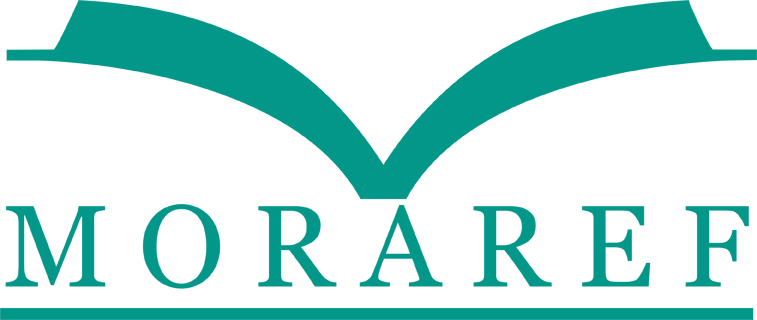The Relationship Between Infant Formula and the Incidence of Dental Caries Among Stunted Children in Muaro Jambi Regency, 2024
Abstract
Stunting is the most prevalent form of malnutrition, with far-reaching impacts beyond just height and academic performance, as it is also associated with poor oral health conditions. A study has shown that stunted children have a high prevalence of dental caries, with a def-t index value of 53.3%. Muaro Jambi Regency has a stunting prevalence rate higher than the provincial average of Jambi, standing at 18.6%. This study aims to identify the relationship between formula feeding and the incidence of dental caries in Muaro Jambi Regency in 2024. This study employs a cross-sectional design. The sample consists of stunted children aged 1-5 years. Data analysis includes univariate, bivariate, and multivariate analyses. The results of this study show that formula feeding has a significant association with the incidence of dental caries in stunted children, with a p-value of 0.007 after controlling for the variables of cariogenic food consumption and tooth brushing habits. Furthermore, the results indicate that stunted children who are fed formula are 14.545 times more likely to develop dental caries compared to those who are not fed formula.
Keywords
Full Text:
PDFReferences
A. S. Setiawan, R. Indriyanti, N. Suryanti, L. Rahayuwati, and N. Juniarti, “Neonatal stunting and early childhood caries: A mini-review.,” Front Pediatr, vol. 10, p. 871862, 2022, doi: 10.3389/fped.2022.871862.
E. P. Renggli et al., “Stunting Malnutrition Associated with Severe Tooth Decay in Cambodian Toddlers.,” Nutrients, vol. 13, no. 2, Jan. 2021, doi: 10.3390/nu13020290.
Chika Hayashi et al., Levels and trends in child malnutrition. UNICEF / WHO / World Bank Group, 2021. Accessed: Apr. 28, 2023. [Online]. Available: https://www.who.int/data/gho/data/themes/topics/joint-child-malnutrition-estimates-unicef-who-wb
Humas BKPK, “Angka Stunting Tahun 2022 Turun Menjadi 21,6 Persen,” Kementerian Kesehatan RI. Accessed: Apr. 28, 2023. [Online]. Available: https://www.badankebijakan.kemkes.go.id/angka-stunting-tahun-2022-turun-menjadi-216-persen/
WHO, “Malnutrition in children,” World Health Organization. Accessed: Apr. 29, 2023. [Online]. Available: https://www.who.int/data/nutrition/nlis/info/malnutrition-in-children
T. A. Normansyah, D. Setyorini, R. Budirahardjo, B. Prihatiningrum, and S. Dwiatmoko, “Indeks karies dan asupan gizi pada anak stunting;Caries index and nutritional intake of stunted children,” Jurnal Kedokteran Gigi Universitas Padjadjaran, vol. 34, no. 3, p. 266, Dec. 2022, doi: 10.24198/jkg.v34i3.34080.
Sunil Babu Kotha, “Prevalence and risk factors of early childhood caries in the middle east region: A Systematic Review,” Journal of Population Therapeutics and Clinical Pharmacology, vol. 29, no. 3, Jan. 2022, doi: 10.47750/jptcp.2022.937.
A. Lutfi, R. Flora, H. Idris, and M. Zulkarnain, “Hubungan Stunting dengan Tingkat Keparahan Karies Gigi pada Anak Usia 10-12 Tahun di Kecamatan Tuah Negeri Kabupaten Musi Rawas,” Jurnal Akademika Baiturrahim Jambi, vol. 10, no. 2, p. 426, Sep. 2021, doi: 10.36565/jab.v10i2.395.
M. T. Abadi and A. Abral, “Pathogenesis of Dental Caries in Stunting,” Jurnal Kesehatan Gigi, vol. 7, no. 1, pp. 1–4, Oct. 2020, doi: 10.31983/jkg.v7i1.5383.
J. Large and Z. Marshman, “Does dental caries lead to stunting and wasting in children?,” Evid Based Dent, vol. 23, no. 4, pp. 144–145, Dec. 2022, doi: 10.1038/s41432-022-0822-1.
T. Zhang et al., “Association between socioeconomic status and dental caries among Chinese preschool children: a cross-sectional national study,” BMJ Open, vol. 11, no. 5, p. e042908, May 2021, doi: 10.1136/bmjopen-2020-042908.
S. A. Eid, N. M. A. Khattab, and A. A. H. Elheeny, “Untreated dental caries prevalence and impact on the quality of life among 11 to14-year-old Egyptian schoolchildren: a cross-sectional study,” BMC Oral Health, vol. 20, no. 1, p. 83, Dec. 2020, doi: 10.1186/s12903-020-01077-8.
N. I. M. Ali and J. Marhazlinda, “Geo-Mapping of the Spatial Accessibility to Public Oral Health Facilities among Schoolchildren in Selangor, Malaysia,” Healthcare, vol. 11, no. 10, p. 1405, May 2023, doi: 10.3390/healthcare11101405.
M. Marlindayanti and G. W. Maris, “MILK FEEDING PATTERNS ON THE INCIDENCE OF CARIES IN STUNTING CHILDREN,” JDHT Journal of Dental Hygiene and Therapy, vol. 5, no. 1, pp. 25–31, Apr. 2024, doi: 10.36082/jdht.v5i1.1511.
W. N. Zaini, M. Machmudah, and Z. Aprillia, “The Relationship Between Formula Feeding Patterns and Early Childhood Caries In Preschool Children In Ketileng Village, Todanan Blora,” Jurnal Kesehatan Gigi, vol. 10, no. 1, pp. 47–55, Jun. 2023, doi: 10.31983/jkg.v10i1.9530.
Direktorat Gizi Masyarakat, Petunjuk Teknis Sistem Informasi Gizi Terpadu (Sigizi Terpadu). Indonesia: Kementerian Kesehatan, 2018.
K. Anwar, A. Salsabilla, and Muh. N. H. Syah, “The Relationship between the Frequency of Formula Feeding and the Use of Milk Bottle Size with the Nutritional Status of Infants Aged 0-24 Months at Puskesmas Merdeka, Bogor City,” Amerta Nutrition, vol. 7, no. 2, pp. 92–99, Dec. 2023.
B. R. Masitta, A. Malaha, and T. Dunggio, “THE RELATIONSHIP BETWEEN FORMULA FEEDING AND LACK NUTRITION IN BATITA CHILDREN IN THE WORKING AREA OF HULONTHALANGI PUSKESMAS,” Bina Mandiri University of Gorontalo, 2022.
S. G. More, R. Sankeshwari, P. A. Patil, S. S. Jalihal, and A. V. Ankola, “Infant Formula and Early Childhood Caries,” Journal of Dental Research and Reviews, vol. 5, no. 1, pp. 7–11, Mar. 2018, doi: 10.4103/jdrr.jdrr_11_18.
S. More, R. Sankeshwari, P. Patil, S. Jalihal, and A. Ankola, “Infant formula and early childhood caries,” Journal of Dental Research and Review, vol. 5, no. 1, p. 7, 2018, doi: 10.4103/jdrr.jdrr_11_18.
DOI: https://doi.org/10.31983/jkg.v12i1.12020
Article Metrics
Refbacks
- There are currently no refbacks.
| View My Stats |











.png)


.png)
.png)









